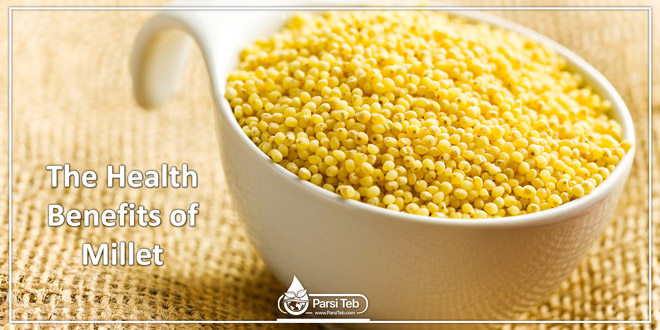Millet
Millet is a grain that has often been associated with bird food but it has a whole host of nutritional benefits for people as well. Your nutritionist may recommend millet if you suffer from asthma, migraines, or thyroid problems. Read on to find out more – you may just be surprised!
What is Millet?
Millet is small, round in shape, and can be white, grey, yellow, or red. The most common form in stores is the pearled, hulled kind, although you can find couscous made from cracked millet.
Millet is a tasty grain that has a mildly sweet, nut-like flavor. It is nearly 15 percent protein and is rich in fiber, B-complex vitamins such as niacin, thiamine, and riboflavin, the essential amino acid methionine, lecithin, and contains some vitamin E. Millet is also high in minerals such as iron, magnesium, phosphorus, and potassium. It is also rich in phytochemicals, including phytic acid which lowers cholesterol and phytate which is associated with a lower risk of cancer.
The Health Benefits of Millet
The magnesium in millet can help to reduce the severity of asthma and also the frequency of migraines. Magnesium can also lower high blood pressure and reduce the risk of a heart attack. Phosphorus is used by every cell in the body. As well as helping to form the mineral matrix of bone, it is a component of other life-critical compounds such as adenosine triphosphate. It’s also an important part of nucleic acids, helps to metabolize fats, and is an essential part of lipid-containing structures such as the cell membrane and structures in the nervous system.
The niacin in millet can help to lower cholesterol. Millet can also lower the risk of type 2 diabetes, and the fiber it contains can help to protect against breast cancer. Millet is non-glutinous and is not acid forming, so it is soothing and easy to digest. In fact, it is considered to be one of the least allergenic grains available. It is also considered to be a warming grain.
Millet and Goiterogenic Substances
An interesting thing about millet is that the hulls and seeds contain small amounts of goitrogenic substances. These substances limit the uptake of iodine to the thyroid and, in large amounts, these substances can cause goiter. The substances are reduced through the hulling process. Some researchers believe that the goitrogenic substances are reduced even further through cooking, while others believe that cooking and storing the millet in the refrigerator will actually increase the substances. However, the goitrogenic substances are not unique to millet. In fact, common foods such as broccoli, cabbage, cauliflower, spinach, soybeans, and pears, also contain goitrogenic substances. There is no reason to be alarmed by these substances as a varied diet ensures that too much is not consumed. The nutritional value of millet and other foods outweighs the potential concerns. However, if you are hypothyroid, it is recommended that you eat three servings a day or less of these foods.
Using Millet
Millet can be easily cooked using three parts water or stock to one part grain. Add the millet to boiling water and cook until the water is completely absorbed. Remove from the heat and let it steam for an additional ten minutes. Less water will result in a fluffier texture, while more water will result in a denser texture.
Millet can also be sprouted for use in salads and on sandwiches. Millet flour can be used in baked goods and produces goods that are light, dry, and delicate. If stored properly, millet can be kept for up to two years. Keep in an airtight container, in a cool dry place or in the refrigerator. Millet flour quickly deteriorates so it is best to grind it just before using.
 Parsi Teb Physical and Mental Health Journal
Parsi Teb Physical and Mental Health Journal 



